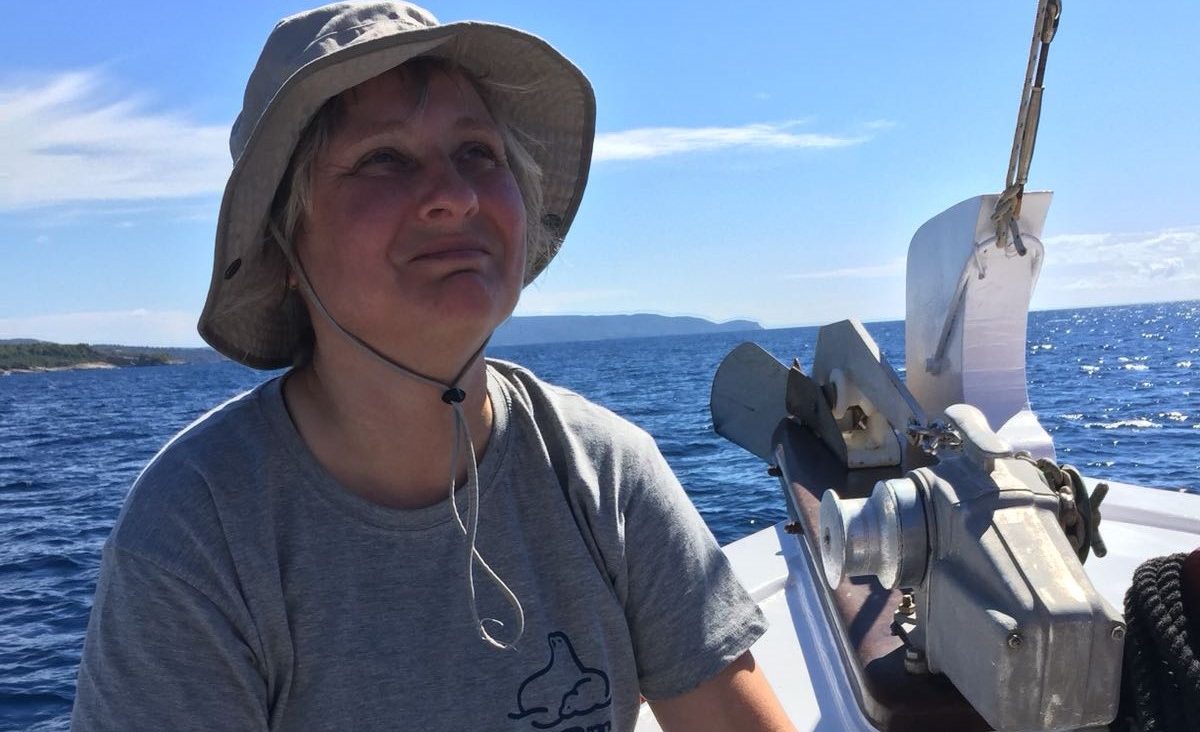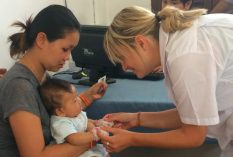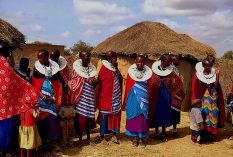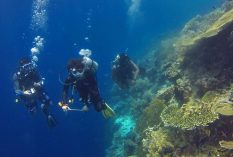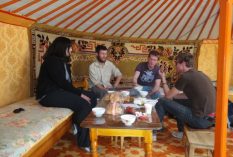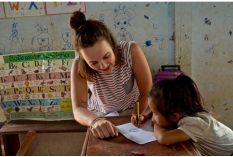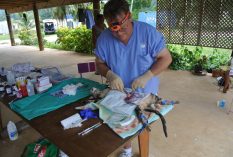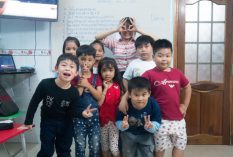My background
“I am from Amsterdam, The Netherlands. Ever since I was young, I loved marine life. In the summer one could find me in the Kennemerduinen (dunes), or in the coastal place Zandvoort, swimming in the Northsea. It still feels like my natural habitat.
1981 – 1983: Cetacea; hmm, quite interesting…
There used to be a Dolfirama in Zandvoort back then, were I first became interested in bottlenose dolphins. During the shows, I learnt the given information by heart.
At the same time the activists marine organisation Greenpeace gained much publicity, and became very popular among youth, for saving seal pups from slaughtering in Canada.
Thanks to them I learnt more about cetaceans specificly and marine wildlife in general.
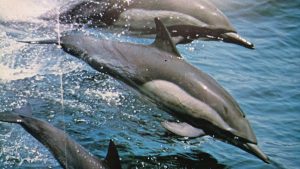
I continued to read and learn more about cetaceans. By that time I had a dream of doing research on wildlife dolphins, but this seemed to me to be reserved to Jacques-Yves Cousteau only. I didn’t have a clue that a study such as marine biologist actually exists. If I might have known back then, I would have been determined to educate to this profession!
35 years later: announcement of the project.
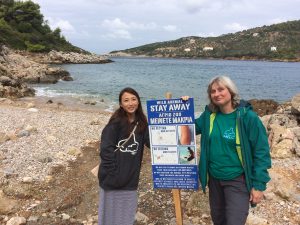
When visiting Greece on holidays for the first time in 2016, I learned to know about Global Nomadic and the project by a pop-up message on LinkedIn. I was unemployed by that time, and the project gave me a new perspective in life. Thus I applied for this traineeship in the last week of September 2017.
I would describe Global Nomadic as a travel agency, specialized on trainee ships and volunteering at non-profit projects world wide.
About the research organisation..
The executive research institute MOm is a non-profit, non-governmental environmental organisation. The project was named after a highly endandgered species; the monk seal (Lat. Monachus monachus), which has its habitat in the eastern Mediterranean. Only a few hundred of these animals still remain worldwide.
Since 1988 They try to preserve the monk seal populations in the Aegean sea, by environmental research, information and education, and raising orfan monk seal pups for the purpose of saving as much inidividuals as possible to maintain a healthy population. It was founded by about 32 people, of which 2 of them are still active today.
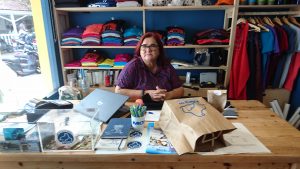
The organisation cooperated with other organisations, like, for example, the Erasmus university in Rotterdam and the seal station in Pieterburen in the Netherlands. Though the monk seal project is main core, the project runs other marine projects as well. One of them is the dolphin research project.
The head quarters is located in Athens, but the site location is at Patitiri, a harbour place on Alonissos island. The island is situated in a marine reservation in the Aegean sea; the NMPANS (National Marine Park of Alonissos Northern Sporades). This is the research area of the project. There is a small house uphill for the lodging of trainees, and an info center downtown.
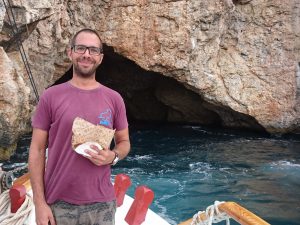
Research on dolphin populations in the marine reservation.
Since 2013 they has started a research project on dolphin populations, named NADP (Northern Aegean Dolphins Project). The purpose of this project is inventarisation and monitoring of dolphins inhabiting the area of the NMPANS. Target species are the (short- beaked) common dolphin Delphinus delphis, the bottlenose dolphin Tursiops truncatus, the striped dolphin Stenella coeruleoalba and the Risso’s dolphin Grampus griseus. The last 3 species mentioned are vulnarable, while the common dolphin is even endangered.
The NADP project is supported by the Thalassa foundation. This foundation provides support to organisations and volunteers active in the Greek marine conservation.
The common dolphin in Greece; history and culture.
So it’s funny though. A specie which is named “common” dolphin, one should expect it to be common, but it actually is endangered. How can that be possible?
Dolphins, especially the common dolphin, are a substantial part of the early Greece history and culture. They are frequently depicted in ancient buildings, like the famous dolphins fresco in the palace of Knossos (approx 1600 B.C.).

Up until the 18th century the common dolphin was most seen in the Mediterranian sea, while the bottlenose dolphin was quite rare. Because of human influences this has changed dramatically. During the industrialisation the populations of both species diminished because of environmental pollution. The number of common dolphins decreased even more than the number of bottlenose dolphins. The common dolphin is probably more sensitive to pollution than the bottlenose dolphin. A recent main problem is (industrial) overfishing. In contrast to the bottlenose dolphin, which is quite adaptive by finding new food resources, the common dolphin is a culture fobic specie. These environmental changes led to a smaller population of common dolphins, in relation to the population of bottlenose dolphins existing today.
The presence and viability of vulnerable and endangered species is an indication of a healthy living environment (like “a canary in a coalmine”). Preservation of marine life in general (and the common dolphin in special) is of great importance to the natural values in this area, as well as to the cultural heritage of Greece.

On-board!
The fieldwork is done at day time. The captain sails the boat among the Sporades islands, within the borders of the reservation. A board member is standing by for hands-on assistance and photography. The trainees take positions on the boat, to have a total overview over sea. Each one of them is watching a piece of horizon, to spot dorsal fins. The study director stands at the center, watching as well, using binoculars. During the trip he is instructing the trainees.
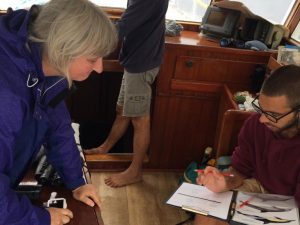
When dolphins are spotted, the observation starts: which kind of species, counting numbers, if possible recognition of males, females and juveniles, kind of behaviour by sounds and movements. This information is noted on forms, as well as time and location of observation. Pictures and film material are made, for the purpose of identification of individuals.
Observation: “It’s a dolphin!”
According to the weather, we had 3 days to sail sea. At the last day, we didn’t expect to spot any dolphins anymore, and directed at the harbour. Then, all of a sudden, a common dolphin jumped in front of my face out of the water. All of us got enthousiastic, went to see them, and took pictures. We counted 3 of them. Two of them swam together, while the third one swam among them. They were very eager to join us, jumped up from the water every now and then, and played in the waves of the boat. When they swam on their back, we tried to determ the sexe. They got along for 25 mins.
Observations: Mixed pods
In 2017 we observed bottlenose dolphins together with common dolphins, cooperating during fouraging. This was not ever seen before! It’s quite unique, because the species are hunting differently. The bottlenosed are fouraging on the surface, and are adaptable when circumstances change, while the commons on the other hand hunt on deeper grounds and are more conservative. The cooperation remained throughout the years, and still exists today.
Observation: “It’s a whale!”
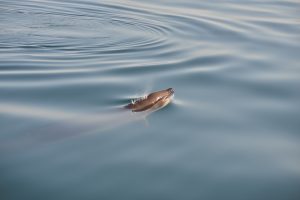
Poseidon made our week! In August 2021, we had the lucky chance to see a pod of 4 Cuviers beaked whales! It’s a rare species. One of them was a juvenile and another one an elder, as one could see by all the scrathes on it’s head, as a result of the hunting on squids. Cuviers beaked whales have only got 2 teeth in the lower jaw, which grow towards eachother, forming a sort of plate. It was confusing to me, because in Dutch we refere to them as the “dolfijn van Cuvier”, the Cuviers’ dolphin, so not a whale. The Cuviers beaked whale is not a real dolphin, because it doesn’t belong to the family of the Delphinidae, but to the Ziphiidae. The Mediterranean subpopulation is vulnerable.
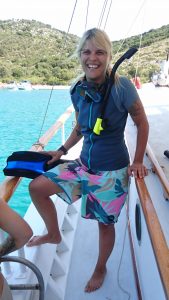
Plastic fishers
On a regular base MOm cooperates with the plastic fishers. People, most volunteers, dive into see in search for plastic pollution, and clean it up. The pollution is damaging sealife. Especially old fishing nets harm wildlife animals such as juvenile monk seals, which get trapped in it.
Back to the base
In the evening the trainees have background information about the project by presentations, held by the study director. All information is registered in a database.

Pictures are selected and, if necessary, edited for the purpose of individual identification.A dolphins’ “fingerprint” is the dorsal fin, because of the marks on it; scratches and notches, which are unique for each individual. Relevant pictures are compared and matched to archive material. Annually returning individuals are tracked by this method.
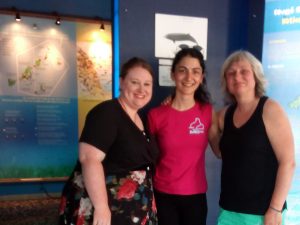
Break…
During the traineeship there are many moments to relax as well. Enjoy Patitiri, do sightseeing at Alonissos or one of the other islands, go to the beach, or vistit the underwater museum in the old village to take a virtual dive to an existing 2500-years-old shipwreck. Share information with the project crew and socialize with fellow trainees, who come from all over the world, among them many (marine-) biology students, who share the same interest. It was awesome!
The study director told me that after 20 years of data collecting, conclusions can be made. Since I think this a very valuable research project, I aim to return each year to follow the devellopments. Infact, I went back again!”
Dolphin Research Internship in Greece

